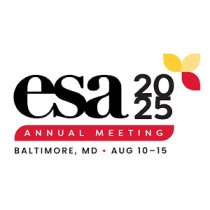NEON and NASA Team up at the Frontier of Remote Sensing in Ecology
June 21, 2013
The NEON Airborne Observation Platform (AOP) team and a crowd of researchers from several different U.S. institutions joined forces in the Sierra Nevada and San Joaquin Valley in mid-June 2013 for an intense bout of collaborative data gathering on the ground and in the air. Their efforts were part of the NASA Hyperspectral Infrared Imaging (HyspIRI) Airborne Campaign, a two-year effort to demonstrate the utility and feasibility of the proposed HyspIRI satellite mission. Some of the researchers will utilize the data from NASA, NEON and their own instruments to develop tools that may help NEON and the ecological research community achieve true continental scale by bridging the spatial and resolution gap between site-based data and global-scale remote sensing data.
"The HyspIRI mission will enable long-term, global-scale observations of a number of ecologically important variables including the spatial patterns of ecosystems, their compositions and diversity, and the impacts of changing climate and land use on ecosystems, groups of organisms, and their distributions," says Tom Kampe, Assistant Director for Remote Sensing. "Airborne and ground-based measurements, such as those provided by NEON, are needed to assess the accuracy of these observations and to establish empirical relationships between ecological parameters and the satellite measurements.” HyspIRI will collect information about Earth’s surface and vegetation by sensing light at many wavelengths in the visible and infrared parts of the spectrum with two instruments mounted on a satellite in low Earth orbit. The HyspIRI Airborne Campaign aims to collect and conduct research and analyses with HyspIRI-like data to demonstrate the scientific utility of the future HyspIRI mission and help prepare the scientific community to use true HyspIRI data when it becomes available in the future. To collect HyspIRI-like data a NASA ER-2 aircraft flies high over six flight campaign blocks in California with the Airborne Visible/Infrared Imaging Spectrometer (AVIRIS) and MODIS/ASTER Airborne Simulator (MASTER) instruments mounted onboard. One of the blocks coincides with NEON’s Pacific Southwest domain sites in central California, so the NEON team flew its AOP instrument suite – which includes a digital camera, LiDAR (laser light measurements of 3-D surfaces), and a next-generation imaging spectrometer – over part of that block at a much lower altitude. The NEON instruments collected spectral information at higher spatial resolution than the instruments aboard the ER-2, as well as structural information. “It’s a really neat partnership here with NASA and NEON doing commensurate science at multiple scales,” says Woody Turner, Program Scientist for Biodiversity at NASA Headquarters and manager of the HyspIRI Airborne Campaign.
Meanwhile, researchers, students and NEON staff on the ground collected LiDAR and spectral information at an even higher spatial resolution over a much smaller area, as well as measurements of everything from plant metabolism to the structure and composition of all the vegetation in the area. Altogether, this rich suite of data collected at the same location at different spatial scales provides researchers with a golden opportunity to test hypotheses and develop tools for new and more sophisticated applications for remote sensing data in ecological science. “With NEON, we are trying to take remote sensing to the 21st century via spectroscopy,” Turner says.
